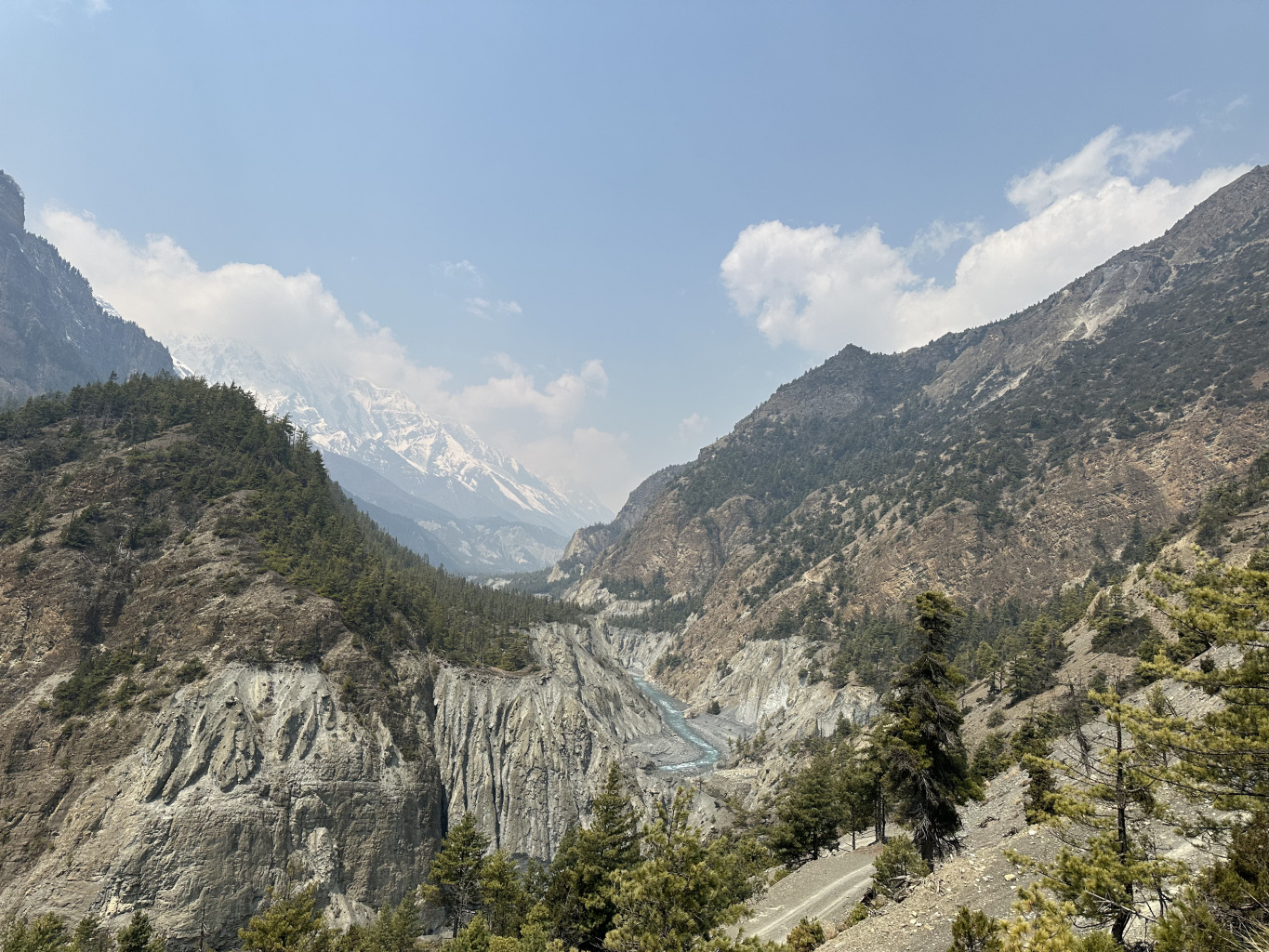EcoTourism EXPERT’s correspondent has dreamt of traveling to the Himalayas in Nepal for a long time. Many mountain hikers and trekkers strive to get to the Annapurna Ring trekking route. Hiking and trekking in the Himalayas are only possible in spring in April-May and in autumn in October-December. So, we started preparing for our April trip a year in advance.
And there was a lot to prepare for because to go along the mountain hiking route, a traveler needs to be physically fit to overcome the difficulties due to mountain altitudes, as well as get over everyday difficulties, and be in a good and positive state of mind.
And now, let me speak on one topic after another and tell some useful life hacks that can be of interest to those who are just about to start their journey and enjoy it.
Almost any travel abroad begins with obtaining a visa. So, our journey to Nepal began with getting an Indian visa, although we should be just in transit through New Delhi. I had to apply for a full-fledged e-visa, and even though it cost very affordable $25, filling out the application on the website was rather difficult.
We had another extreme situation at the airport. From the visa confirmation letter, it was unclear where to receive this visa and in what form it should be printed out. However, we needed a visa with a photo, otherwise we would not be able to board without a visa and fly to India.
We experienced another unexpected stressful moment at the Delhi Indira Gandhi International Airport. To enter the airport building, the departing passengers should produce their passports, tickets, or completed check-in for their flight. And if you do not have registration or your tickets are not in English, difficulties may arise. We had a lot of troubles and were rushing around the airport looking for an opportunity to print out our tickets in English.
In Kathmandu, the capital of Nepal, we applied for a visa directly upon arrival and paid in cash, after standing in a queue for the ATM to get money and then in another queue to pay for our visas. In principle, the service is convenient, but it turned out that it is also possible to submit the application online, the main thing is to mention the required dates for your visa.
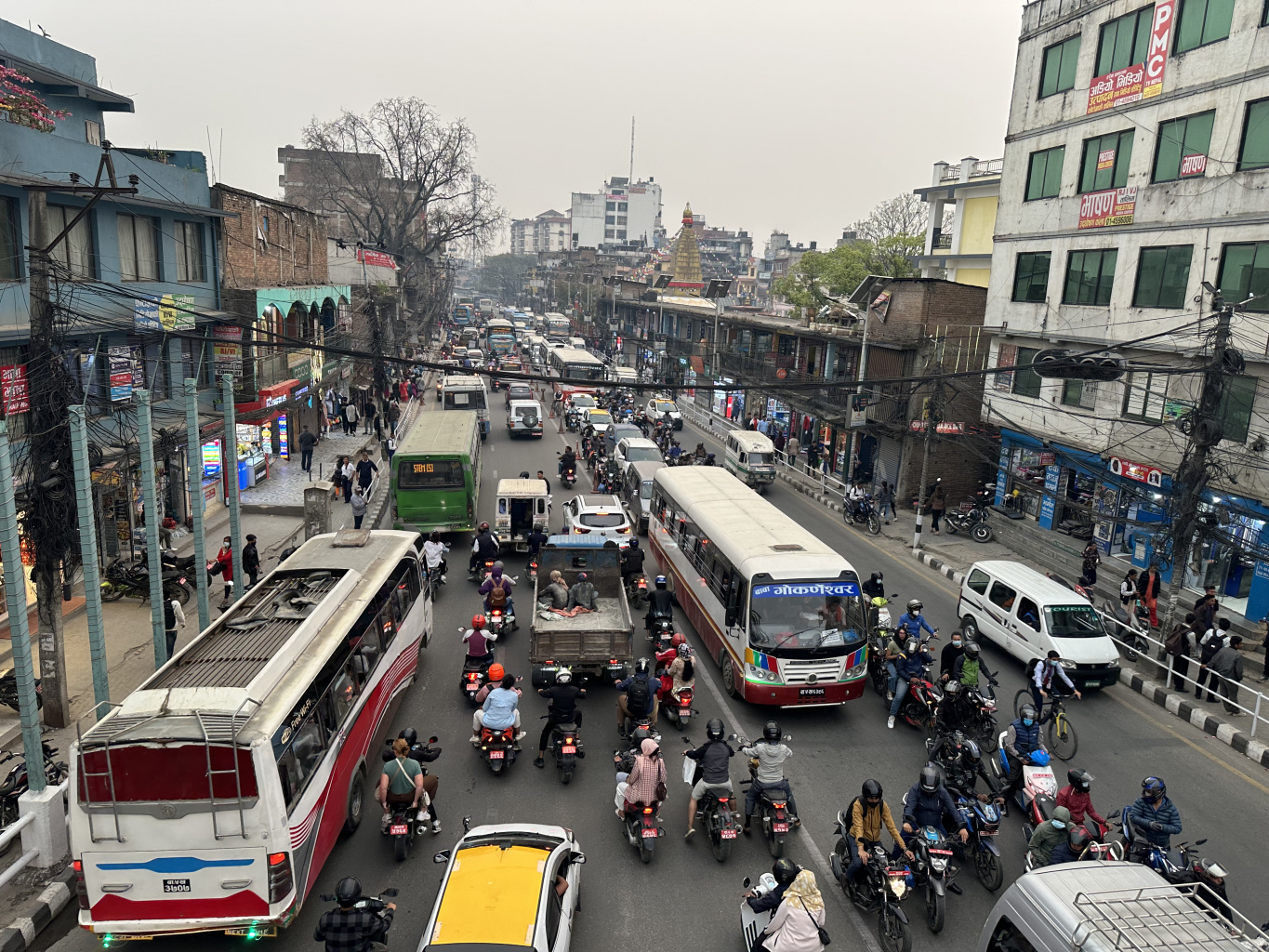
On our way to the hotel, we were struck by the traffic in the capital of Nepal that was unregulated, chaotic, with an incredible number of two-wheelers, cars, buses, carts, bicycles, and pedestrians.
Kathmandu is the capital and the city is big but many houses do not have a central water supply; water is brought in big tanks and the locals just fill various reservoirs with water. They mostly make laundry and wash their hair in the rivers and cook using an open fire made on the floor. In general, industrialization, one might say, has not come to Kathmandu.
The city is full of craftspeople, and you can see tailors everywhere repairing and sewing clothes, as well as wood carvers making patterns on frames, women making metal ‘singing’ vases, some persons making malas, Buddhist rosaries, and these activities are in every street... It’s interesting to observe this life in open shops located on the ground floors of houses.
Among the unusual clothes of the locals, the unusual headdresses of Nepalese men - high caps of various colors - attract the travelers’ attention. Later on, we learned that such a cap is called a chatte-topi - a traditional cap for men that - in combination with a caftan vest - makes a traditional Nepalese men’s suit. But while you don’t see people in the streets wearing a vest, every second man wears a high cap. Tourists are also surprised at the variety of spots on the women’s forehead and hairline, as well as various flowers stuck to their foreheads or to the top of their heads. Once, we even saw a dog with a red spot.
In the evening of the day of arrival, we went to an amazing place sacred for all the Buddhists - to the huge white Boudhanath (Buddha) Stupa in the center of Kathmandu. We were there around 5 p.m. and were stunned by the huge disk of the sun hanging over the Stupa like a red orange and illuminating the air with some kind of surreal light. A Boudhanath Stupa is a large temple in the center of the square with the eyes - a symbol of Wisdom - in the upper part. People move around clockwise, both old and young, alone and in groups, the locals, tourists, the laity, and monks. It is believed that you need to perform 108 rounds (pradakshina) around the Boudhanath Stupa clockwise, but this takes a lot of time, so, tourists usually go around the stupa three-four times only. While going around the Boudhanath Stupa, you need to think of your wish, spin the wheel and say the words of your prayer, and your kind words will be carried by the wind around the world, along with the rustle of the waving Buddhist flags. (108 is a special number in Buddhism; Buddhist malas - similar to rosaries - have 108 beads - ed.).
The next day, we went by jeeps to the starting point of our trip to the village of Tal. We were surprised at the creativity of Nepalese truck drivers who usually decorate their trucks so brightly and cheerfully that they look like tough guys from movies with hooligan car-friends. These are trucks with ‘mustaches’, with the screens from various movies, five-pointed red stars, with the pictures of the royal family or the Hindu deities.

Along the way, we saw haystacks scattered here and there, they looked like the ones at the paintings by Manet. A long bamboo is in each haystack, like a stick in an ice cream cup. It seems that some giant is going to take the haystack by this stick and swallow it.
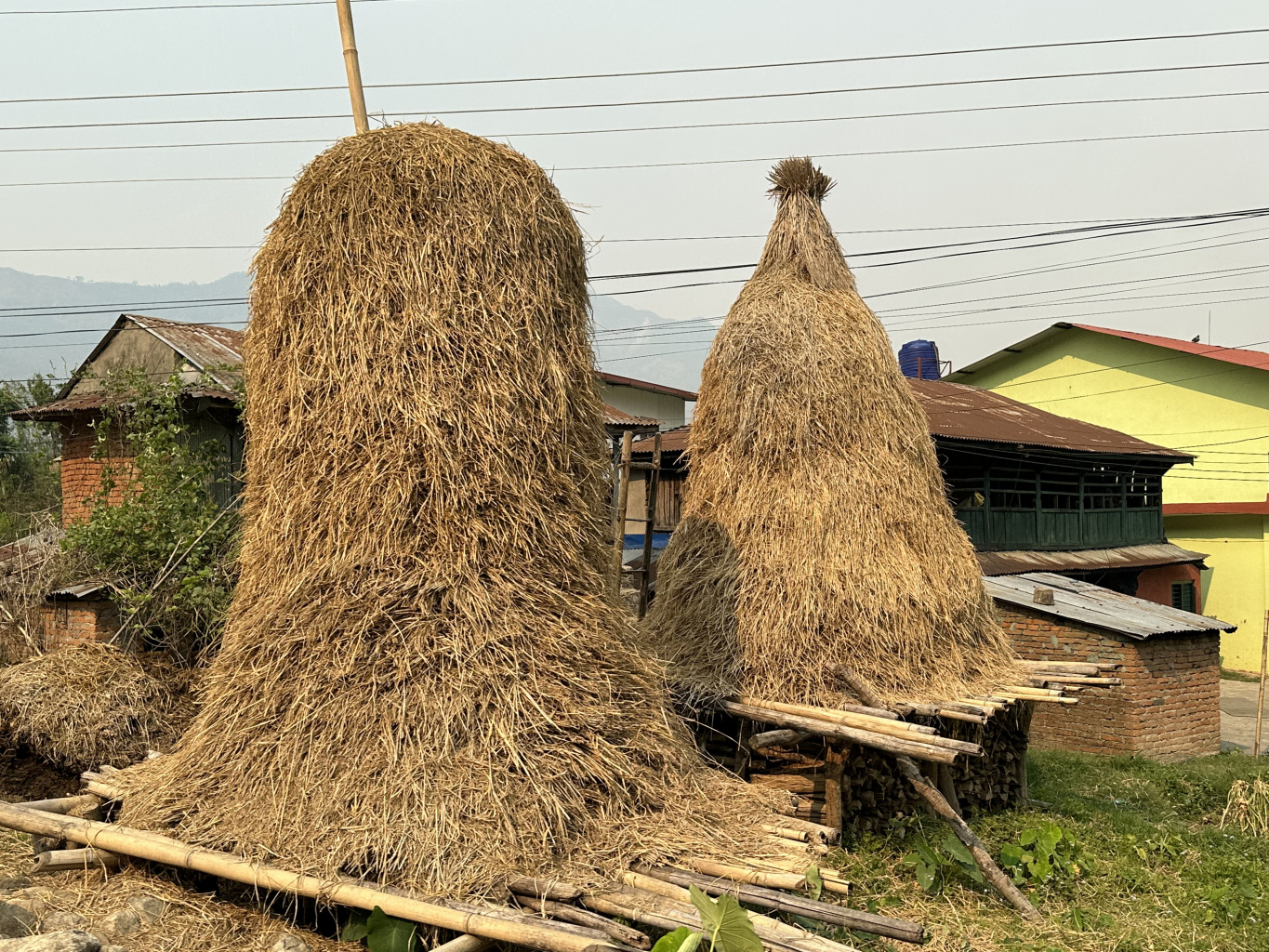
By the way, it turned out that tomatoes and all the nightshade family are alien to the Nepalese food culture, but various cucumbers, on the contrary, are very popular with the locals as these vegetables quench thirst well and give energy to travelers.
We arrived at Tal (1,700 m above sea level) in the evening and stopped there at the Nepal’s first guest house. In such traditional accommodations, mountain hikers and trekkers have approximately the same conditions when they say overnight in Tal in a room with a bed and a blanket, a shower and toilet outside, food served on order in the common dining area. The rooms are not heated, and the temperature outside is from zero to plus 5 degrees Celsius, so, it is recommended to sleep in a sleeping bag wearing clothes, warm thermal underwear and a cap, and use a thick local blanket additionally.
The next morning, we went to the village of Chame (2,630 m above sea level) by jeeps. In the afternoon, the walking part of our tour began. Everyone knows that during such tours, porters help carry heavy backpacks. For our group of 10 people and a guide, we had five porters to help us. We also carried our individual backpacks, but only with the things that we needed during our trip like an extra set of clothes, water, snacks, and sunscreen cream.
In the evening, we arrived at the next hotel to stay overnight in the village of Kreku, the hotel was luxurious with apple plantations. Cider is made there, and apple trees and the Himalayas are seen through the windows.
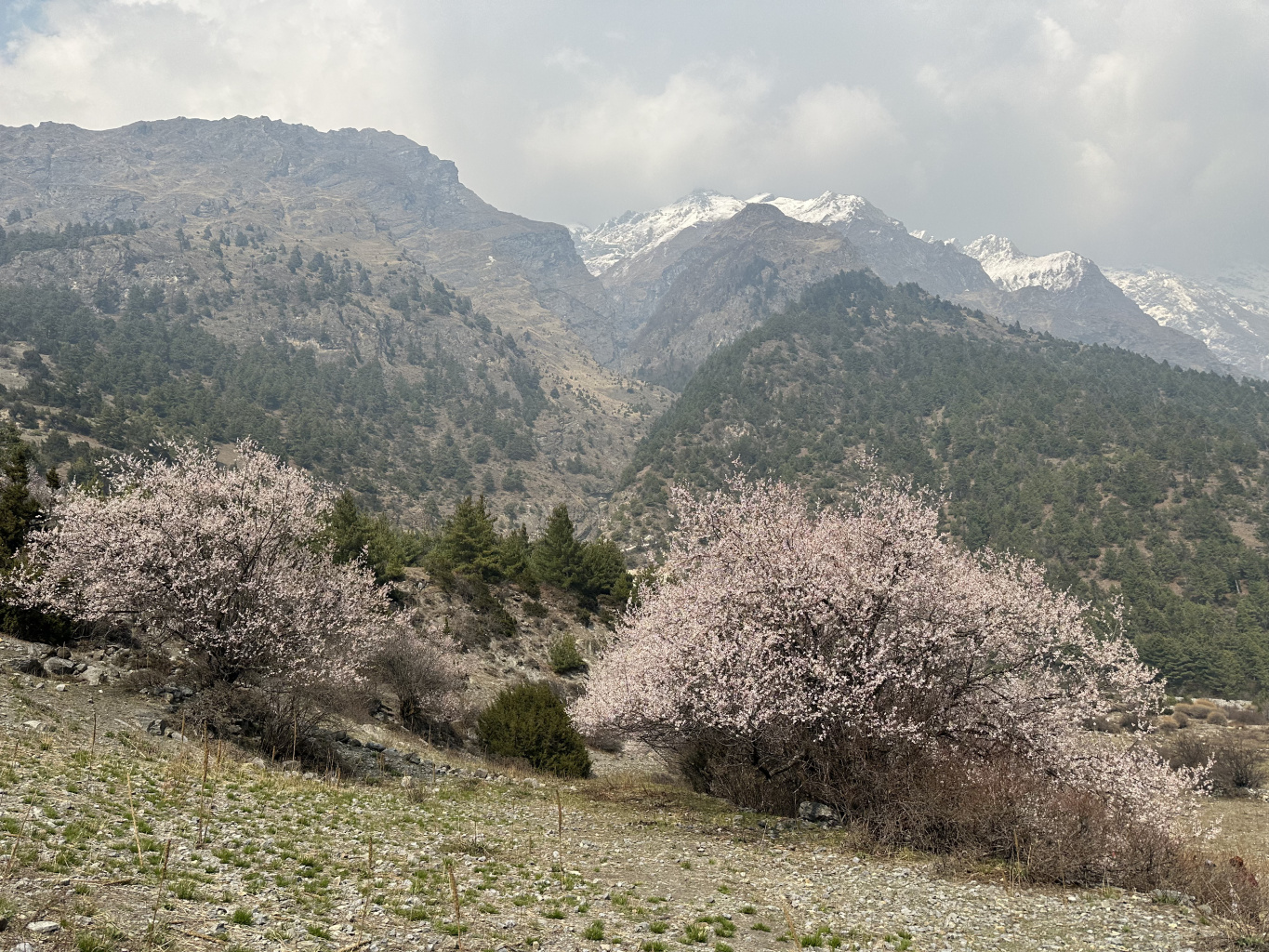
From this village, we moved to Pisang (3,190 m above sea level) along a picturesque road going through a coniferous forest with large and small cairns built everywhere. (A cairn is called ‘chorten’ in Nepal, from the Tibetan word ‘peak or top’ - ed.). These homemade stupas point towards the sky and carry a sacred meaning regardless of their size.
After Pisang we moved even higher, to the village of Ngaval (3,660 m above sea level). The day was more difficult than the previous ones because the path ‘climbed to higher altitude’. It was difficult due to the lack of oxygen, but the ‘life hack’ is that when altitude sickness hits you, just keep on moving and switch your attention to some activity, then the saturation level returns to normal, the body seems to ‘forget’ about the difficulties.
A new day means covering a new distance passing the Annapurna mountain range. This time we went to the village of Manang (3,670 m above sea level) located in the stunning valley of the stormy and fairly wide Marshyangdi (or Marsyangdi) River. One can say, there was “choppy water and a very young shepherdess”, quoting the hero of a famous old film. The shepherds going together with herds of shaggy cattle - cows, sheep and yaks - were a striking feature of this harsh, but at the same time idyllic landscape. We were surprised by how the authentic houses, the lifestyle of the Nepalese coexisted in Manang with coffee shops offering fresh delicious pastries and yak-milk cheese, similar to Parmesan cheese.
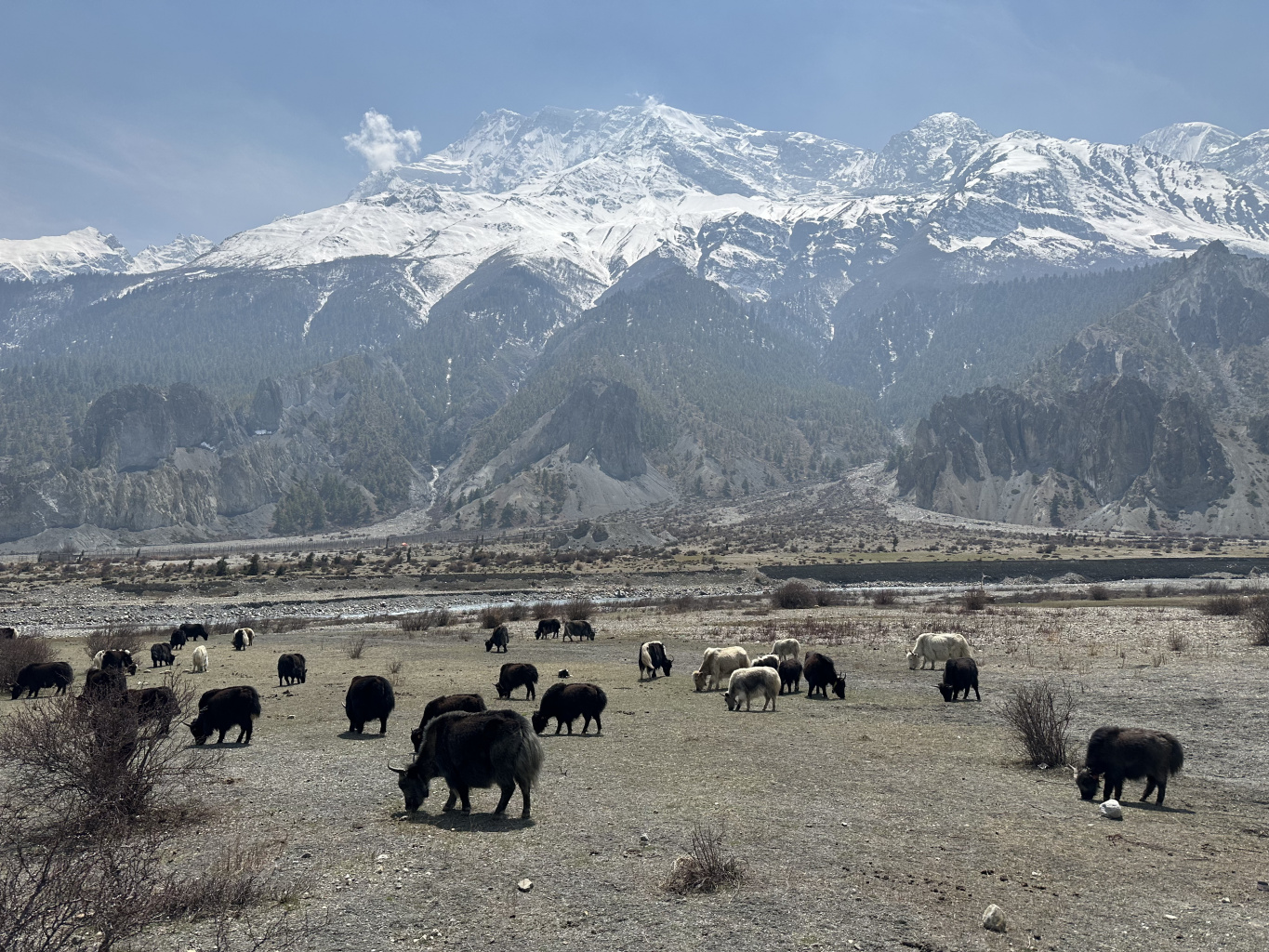
We spent a day in Manang and went to the Milarepa cave. The 2-way journey took us 5 hours. Few people take this route but we would like to recommend this walk as the landscape and the scenery are stunning, and at the same time, you can have additional time to adapt to the altitude.
Milarepa (1052-1135) was a yogi, a practitioner of Yoga, teacher of Tibetan Buddhism. According to legend, he ate nettles and that was why he became green, he meditated in a cave nearby and was among the foremost saints of Tibet. The cave named after him and located at an altitude of 4,000 meters is a holy site.
Like in The Wizard of Oz, a ‘yellow brick’ road leads to the cave and it turns into a beautiful mountain path through a coniferous forest. Along the way, we saw roe deer grazing and huge gnarled birch trees with a lot of traditional five-color Buddhist flags attached to them.
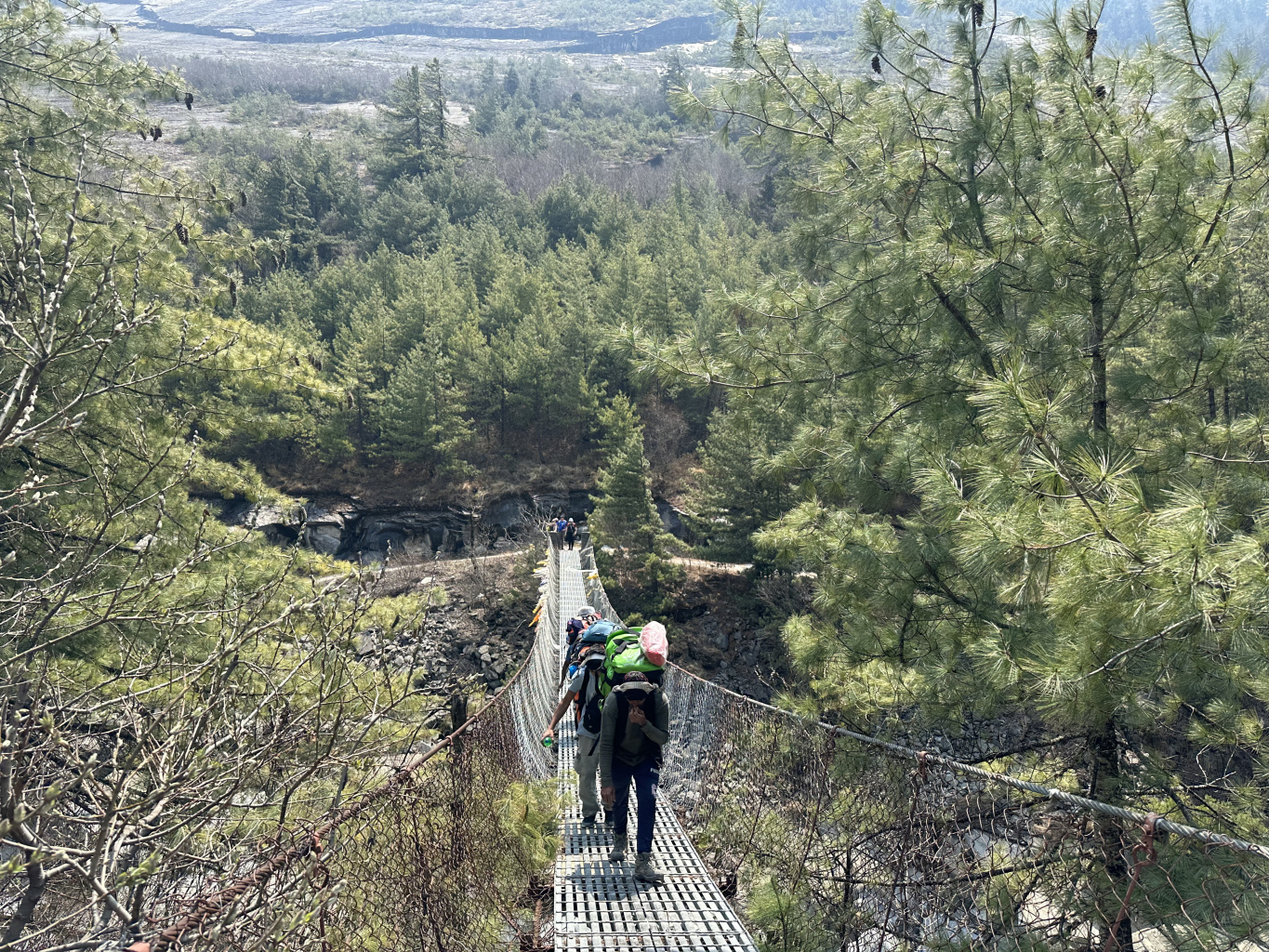
Near the cave, a man met us who looks after the temple during the tourism season. He gave us white scarves to wear around our necks as a sign of good luck. We didn’t understand whether he gave them to us in response to a small donation we made or in honor of April 13, the beginning of the New Year 2081 in Nepal.
On the way back, like in a fairy tale, a monk ‘rolled right down’ the mountain towards us, so the three of us walked down, asking him about his life. Trying to recall English words, he said that he became a monk at the age of 14, emigrated from Tibet to Nepal at the age of 22, and is now 52 years old.
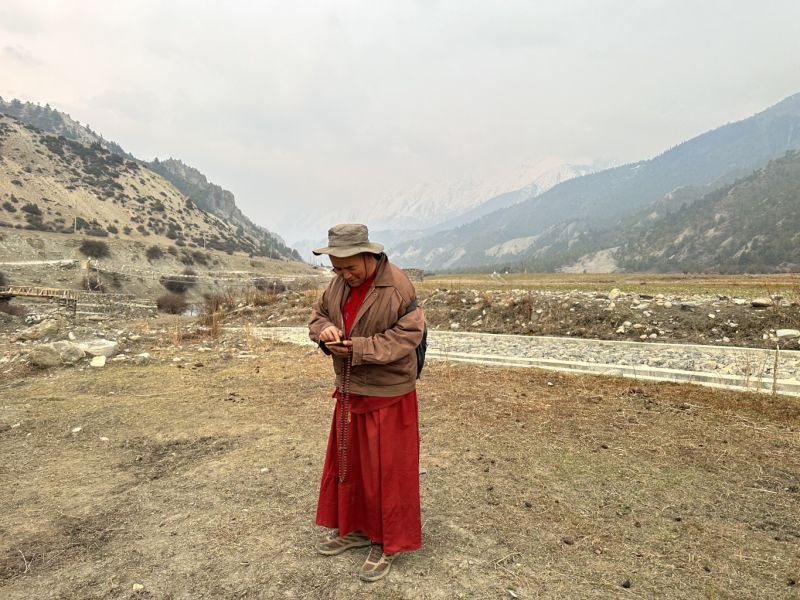
After Manang, we moved to Ledar (4,150 m above sea level) where we were surprised by the amazing beauty of the peaks of the Gangapurna and the Annapurna III mountains, as well as the absence of AC outlets in the guesthouse rooms. About forty guests vied to use one of the four AC outlets in the lounge to recharge their mobiles.
At the next place, High Camp (4,900 m above sea level), there were neither sockets, nor light bulbs. (It’s better to take a flashlight along with you!) The area was similar to tundra where junipers looking like the spots of a leopard spread across the surface of the mountains. Travelers can see the longest suspension bridge built quite recently that is almost 400-meter long. This was the last and coldest night before passing a mountain range, that is, before the most important day of our trip.
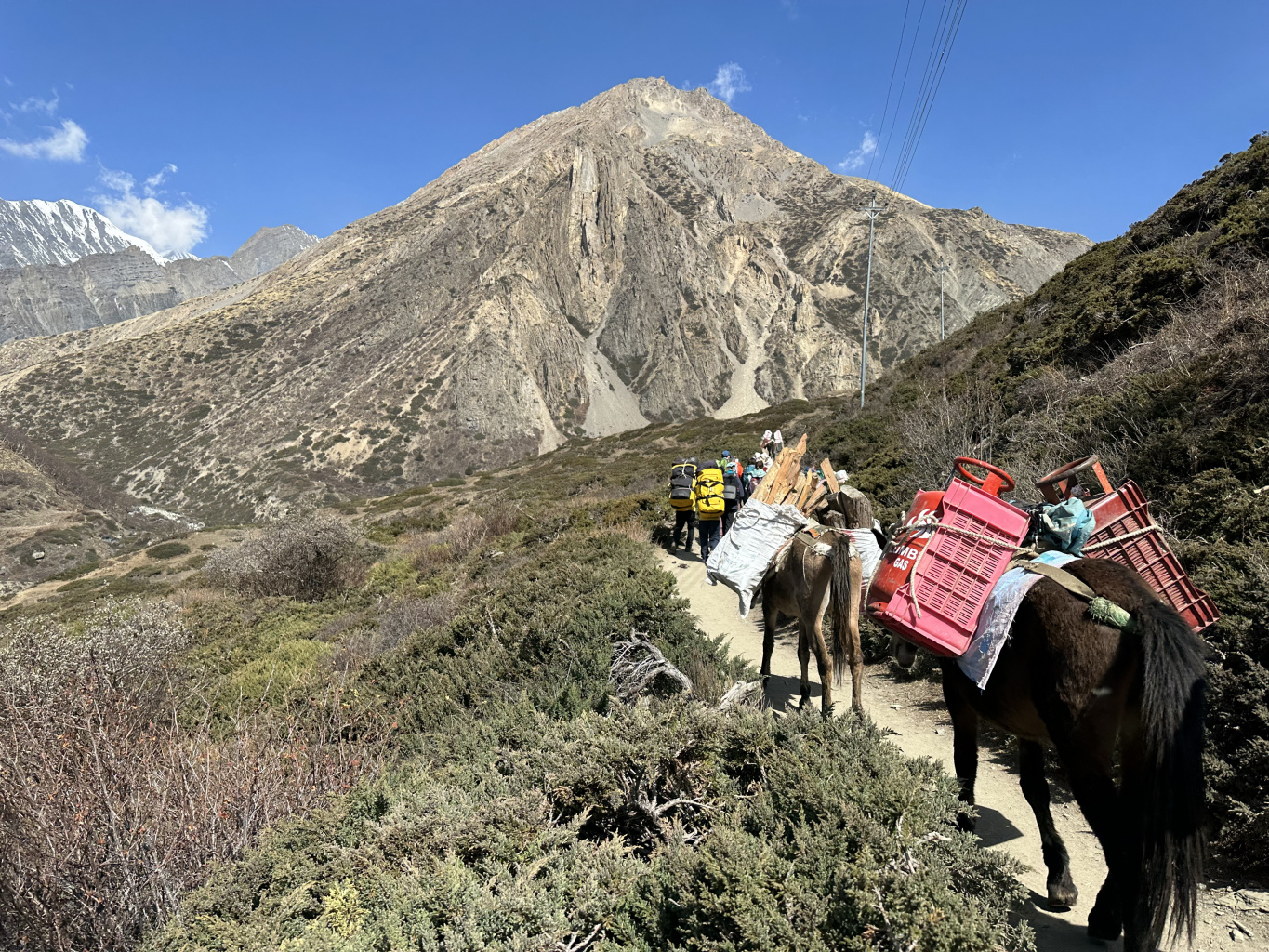
We had breakfast at 4 a.m. and left at 5 a.m. when it was still dark. At the crack of dawn, we met quite a few tourist groups moving along the road, including those who did not believe in their potential and used horse-service to pass the mountain range.
It took us four hours to reach the next milestone - the Thorang La Pass located 5,416-meter above sea level. After a short rest and a ‘photo session’, we went down the mountain, and this was a real challenge. Going down the mountain slope requires great attention and is also a great load on the knees. The altitude gradient was substantial, 1,500 meters. We walked the first third of the way wearing crampons, then, we took them off and began to take off our ‘layers’ of clothing.
We descended into the valley of Lower Mustang, and the Upper Mustang was behind the mountain, it’s a separate mysterious kingdom in Nepal, and Tibet is very close to it.
By evening, we reached the town of Muktinath (3,800 m above sea level). It is worth mentioning that our previous journey passed through the mountainous Buddhist part of Nepal, and the local people there looked similar to the Tibetans, and when we descended to Muktinath, we were in the part of the country where the Indians lived.
Muktinath is a special sacred place for the Hindus: people flock to this place not only from Nepal, but even from India. Flows of pilgrims, including men, women, and children - wearing traditional clothes of bright red colors - are brought here by buses and cars to visit the blessed springs like a waterfall-fountain consisting of 108 heads of sacred cows; people believe that after swimming in these springs, their karma is cleaned. Visiting and swimming in the waters in Muktinath is a fest and a meaningful event.
The next day, the ‘walking part’ of our route was over. We moved to the Tibetan village where the Gateway to Tibet is located - a bend in the river in the wide channel of the Kali Gandaki River.
The Kali Gandaki River Valley is an amazing place, the only one in the world where fossils of ammonites or shalagrams (shalagram-shilas) are found; these are black oily unnaturally round stones, in which an ancient mollusk is naturally enclosed. Each stone is considered to be one of the incarnations of God Vishnu. The locals look for ammonites in the Kali Gandaki Valley and sell them at local markets and the roadsides.
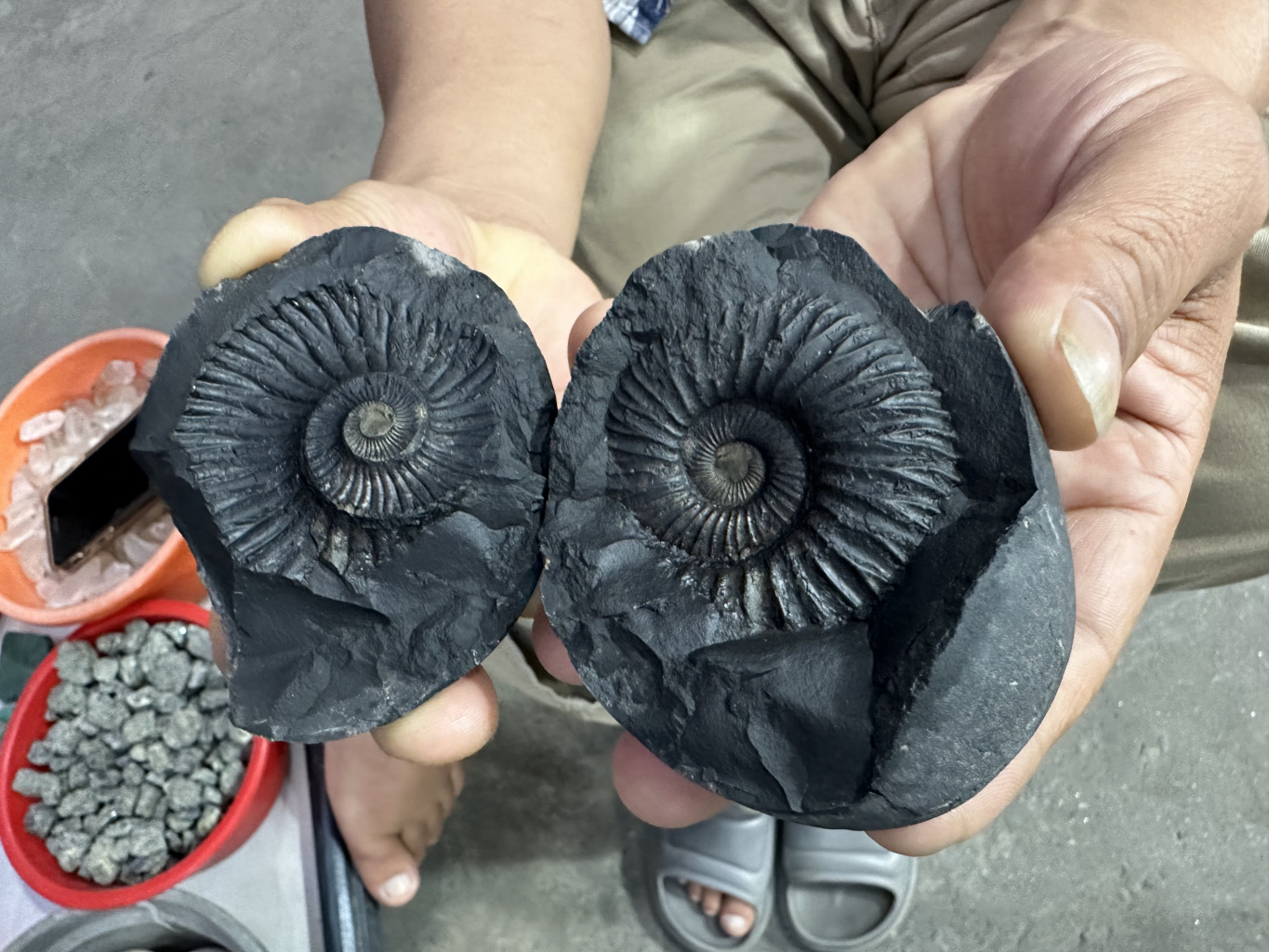
The Tibetan village was an unusual and strange place. It seemed that life there had stopped developing a long time ago, and only the girls enjoying ‘French skipping’ showed us that we were not in the Middle Ages.
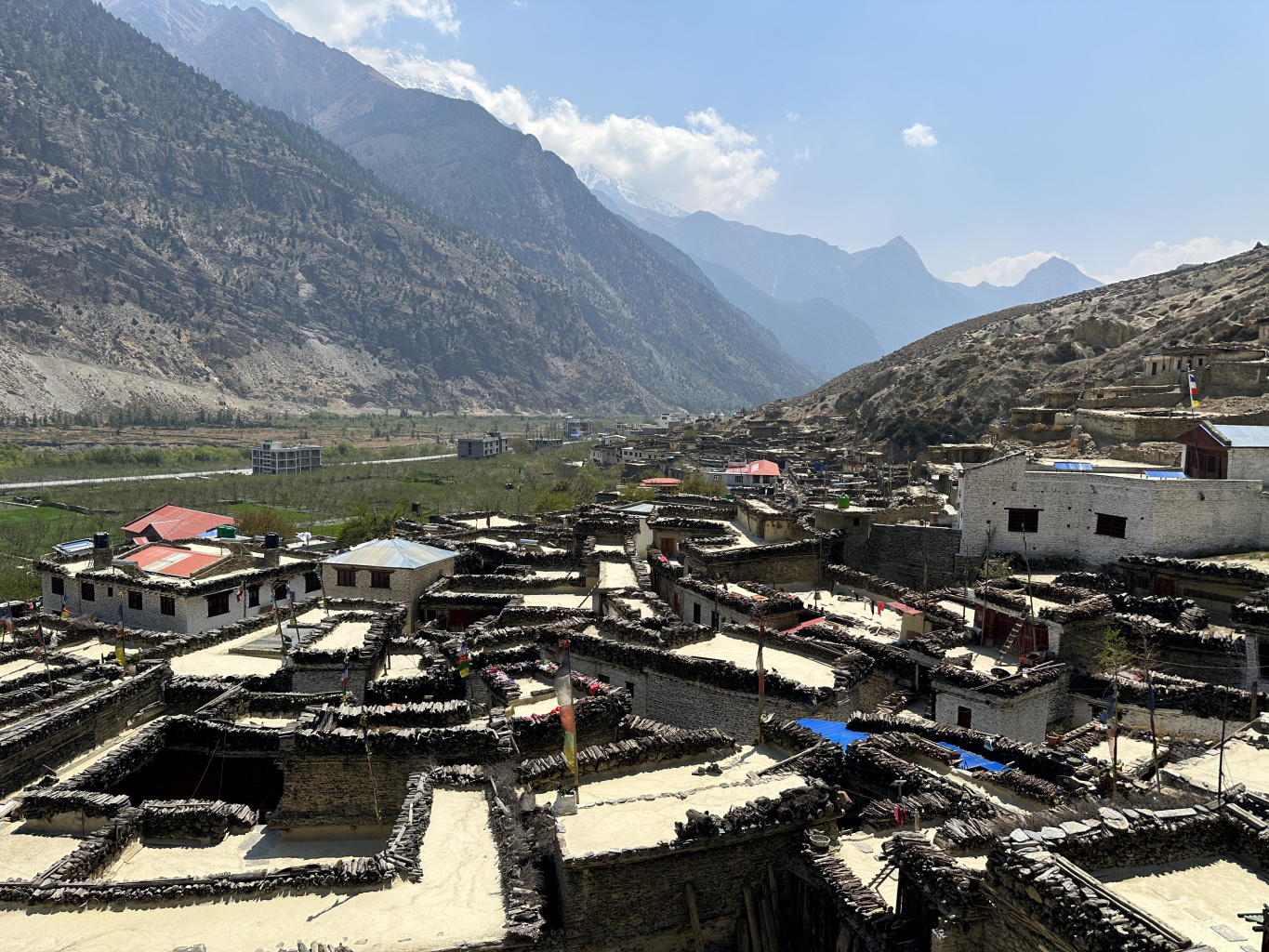
We went by jeeps to the village of Marpha, the ‘apple capital’ of Nepal. This was a cozy village with a central tourist street and apple and apricot orchards, more like a holiday village where everyone would like to stay forever. In Marpha, we visited a Buddhist monastery where boy served as monks. We were surprised to get to know why Buddhist monks wear deep red and other shades of red. It turns out that the red color is a ‘stop-signal’, a ban on temptations and sins.
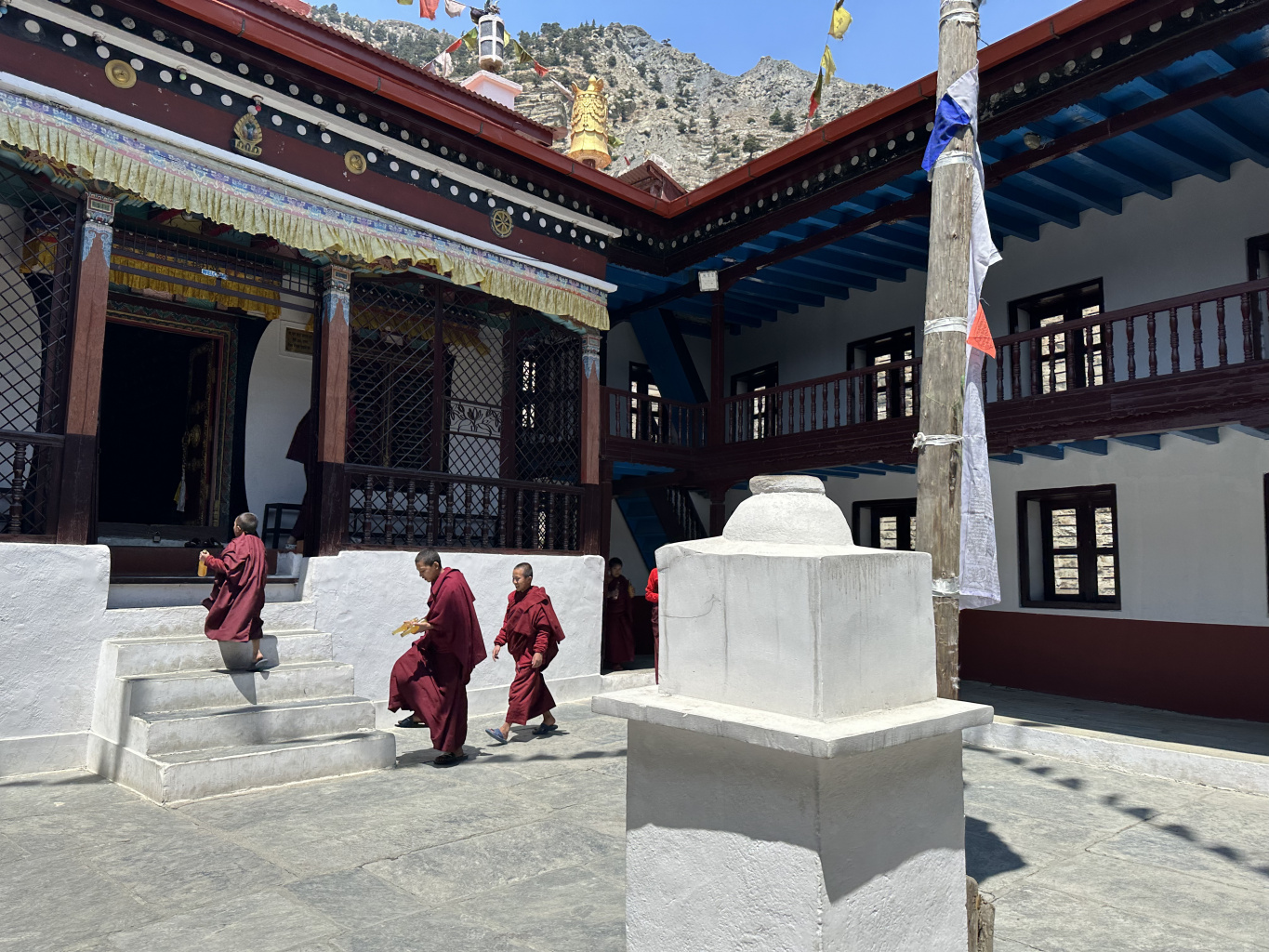
We completed the Annapurna Ring in the city of Pokhara, as bustling and dusty as Kathmandu, the capital of Nepal. The domestic flight on our way back took us only 23 minutes. So, 15 days flashed by, the journey was amazing but this time turned out to be quite enough to start missing home.

